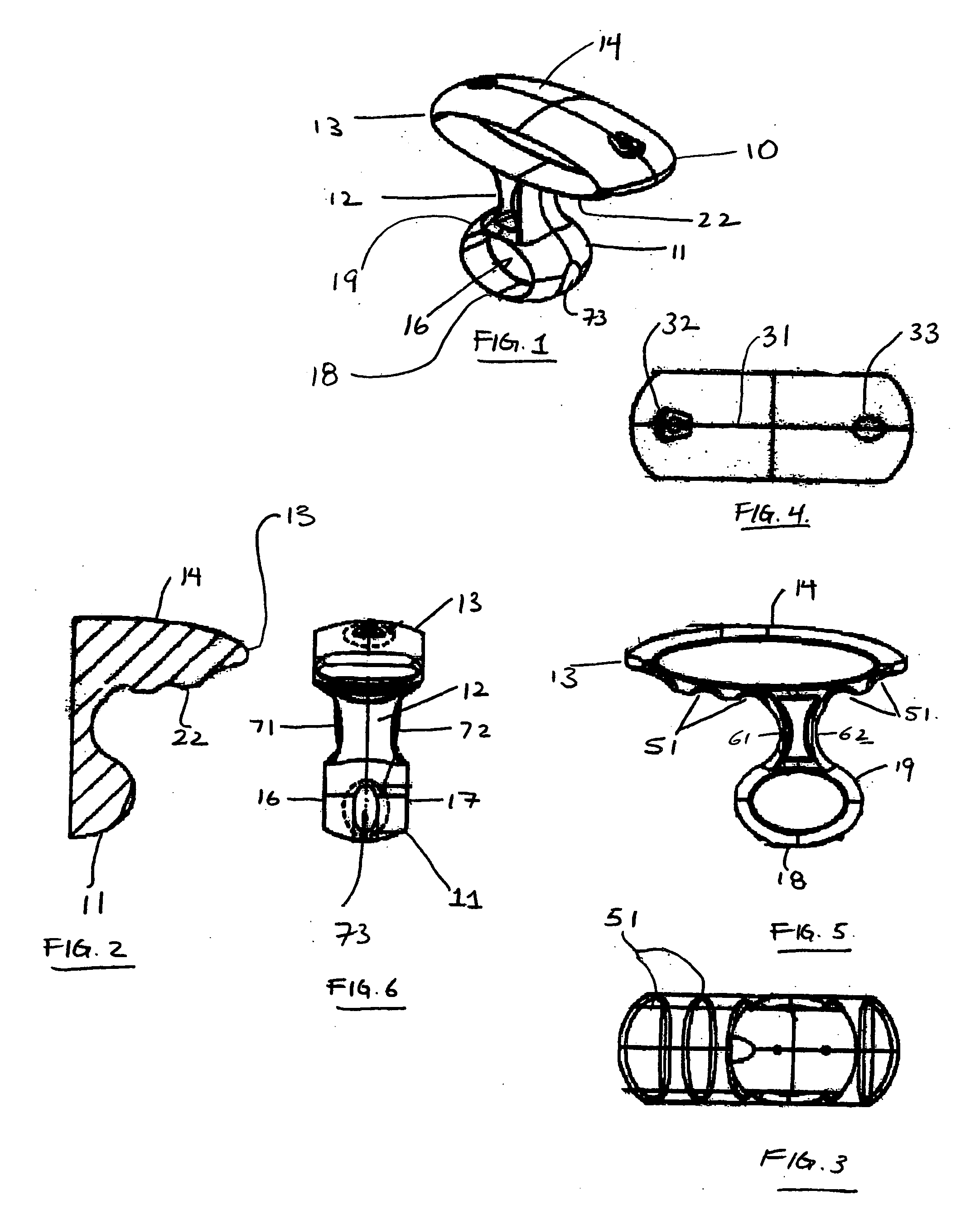Methods and apparatus for a manual vascular compression device
a compression device and vascular technology, applied in the field of manual vascular compression devices, can solve the problems of affecting the hemostasis of patients, and affecting the hemostasis of patients, and achieve the effect of facilitating hemostasis and proximal control of blood flow
- Summary
- Abstract
- Description
- Claims
- Application Information
AI Technical Summary
Benefits of technology
Problems solved by technology
Method used
Image
Examples
Embodiment Construction
[0030] To more clearly set forth the invention, reference will be made to the embodiments illustrated in the drawings and specific language will be used. Nevertheless, it should be understood that the invention should not be deemed limited to particular embodiments, descriptions or drawings contained herein.
[0031] The vascular compression apparatus of the invention is used on a patient to apply pressure on an area near or at a wound site, such as a blood vessel puncture, most often after a cannulated procedure such as angioplasty, for the purpose of controlling the patient's bleeding and, further, of achieving hemostasis.
[0032]FIG. 1 shows the manual vascular compression device of the invention 10. The device has a handle 13 having a top 14 and a bottom 22, a shaft 12 and a pad 11. The handle 13 is connected, generally off-center, to the proximal end of the shaft 12. The pad 11 is connected to the distal end of the shaft 12 and is generally centered on the top surface 19 of the pa...
PUM
 Login to View More
Login to View More Abstract
Description
Claims
Application Information
 Login to View More
Login to View More - R&D
- Intellectual Property
- Life Sciences
- Materials
- Tech Scout
- Unparalleled Data Quality
- Higher Quality Content
- 60% Fewer Hallucinations
Browse by: Latest US Patents, China's latest patents, Technical Efficacy Thesaurus, Application Domain, Technology Topic, Popular Technical Reports.
© 2025 PatSnap. All rights reserved.Legal|Privacy policy|Modern Slavery Act Transparency Statement|Sitemap|About US| Contact US: help@patsnap.com


